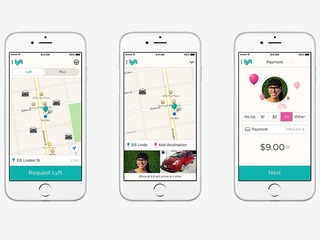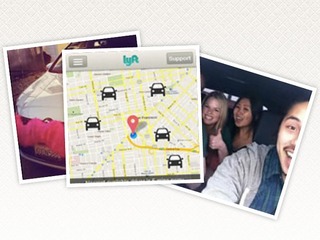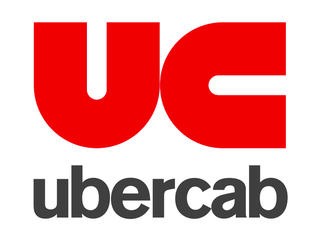When BetterHelp was young: the early years
BetterHelp and Vator have teamed up for Becoming Us, a virtual group therapy program
Read more...Editor's Note: Our annual Vator Splash Spring 2016 conference is around the corner on May 12, 2016 at the historic Scottish Rite Center in Oakland. Speakers include Tom Griffiths (CPO & Co-founder, FanDuel), Andy Dunn (Founder & CEO, Bonobos), Nirav Tolia (Founder & CEO, NextDoor), Mitch Kapor (Founder, Kapor Center for Social Impact); Founders of Handy, TubeMogul, VSCO, Vinted; Investors from Khosla Ventures, Javelin Venture Partners, Kapor Capital, Greylock, DFJ, IDG, IVP and more. Join us! REGISTER HERE.
 As our readers know, Vator has started a series called When they were young.
As our readers know, Vator has started a series called When they were young.
It's a look back at the modest days of startups, what traction they had in their first few years, and how they evolved. In the end, we hope to provide a glimpse into what great startups looked like in their first three years.
Stories like these are always well received because it reminds us that anyone, regardless of pedigree and environment, can rise above the noise and have great influence. They show us the value of being resilient, persistent, and committed. If we can follow their footsteps, maybe we too can have similar success.
My last segment in this series focused on Uber. This segment is on Lyft.
— Lyft's First Year —
Created: May 2012. The app was created as part of a hackathon by the two founders of Zimride.
Founders (ages at the time): John Zimmer (28) and Logan Green (28)
Initial company description: "Lyft is a fun, affordable alternative to a cab brought to you by Zimride, the largest ridesharing service in the U.S. The mobile app features a simple UI and real-time location mapping to deliver a friendly, background-checked driver to your location in minutes.
"Lyft is your 'friend with a car' on-demand, providing a unique in-car experience. Passengers can play their own music, charge up their phones…and even ride shotgun. After only three months of service since launching in private beta, Lyft is transforming transportation in San Francisco. If you’ve seen cars with fluffy pink mustaches driving around the city, you’ve seen us in action."

Launch - at three months: In August 2012, Lyft officially came out of beta for its public launch in San Francisco. The app, available for iOS and Android, allowed riders to pay a "suggested donation" for rides. There were no mandatory charges.
First legal troubles - at four months: The California Public Utilities Commission (CPUC) issued cease and desist letters to Lyft, along with ridesharing services Sidecar and Tickengo. The CPUC was likely reacting to complaints from taxi companies who saw Lyft operating completely free from rules and regulations. Lyft "took the letter as an opportunity to open a conversation" but continued to operate.
In December, the CPUC would announce a proposal to review whether new regulations were needed for ridesharing services. And, in January, the CPUC and Lyft would reach an interim agreement allowing Lyft to legally continue operating.
Traction - at five months from creation, two months from launch: With just 150 drivers, Lyft had given tens of thousands of rides in San Francisco.
First funding - at eight months: In January 2013, it was reported (and later confirmed) that Lyft's parent Zimride raised a $15 million venture capital round led by Founders Fund with participation from existing investors Mayfield Fund, K9 Ventures, and Floodgate. Prior to Lyft's creation, Zimride had raised a total of $7.5 million. Also this month, Lyft also officially expanded from San Francisco to Los Angeles.
Acquisition - at seven months: In March 2013, Lyft acquired the operations team behing Cherry, an on-demand car wash service, in order to support its ongoing expansions. At this point, the ridesharing startup said it had completed hundreds of thousands of rides.
Traction - at 11 months from creation, eight months from launch: In April 2013, Lyft officially expanded to Seattle.
— Lyft's Second Year —
Second funding - at one year: On its first birthday (in May 2013), Lyft officially expanded to Chicago (making it operational in four cities) and its parent company Zimride reincorporated as Lyft Inc., reflecting the success of the "child" product.
Also in May, Lyft closed a $60 million round of funding led by Andreessen Horowitz. The round was considered a "Series C" because of prior rounds raised for Zimride. At this point, the company was completing 30,000 rides per week. And, at the end of the month, Lyft finally expanded to the east coast by opening up in Boston.
Legal troubles - at one year and one month: Similar to its skirmish with the CPUC a year earlier, Lyft in June 2013 received a cease and desist letter from a taxi regulator at the Los Angeles Department of Transportation (LADOT). And, as it had done the last time it recieved such a letter, the ridesharing company continued to operate normally. (On the other end of the spectrum, San Francisco Mayor Ed Lee declared Saturday, July 13 as "Lyft Day," in celebration of the company.)

Traction - at one year and three months from creation, one year from launch: In early August 2013, Lyft celebrated its one millionth ride. By the end of the month, the company would be live in ten U.S. cities: Seattle, San Francisco, Los Angeles, San Diego, Chicago, Boston, D.C., Indianapolis, St. Paul, and Atlanta.
Traction - at one year and four months from creation, one year and one month from launch: Not only would Lyft launch in three new cities (Phoenix, Denver, and Dallas) in September 2013, but it would win a major victory back home with the CPUC officially voting to authorize peer-to-peer ridesharing in California.
Traction and product update - at one year and five months from creation, one year and two months from launch: In October 2013, Lyft continued its momentum by launching in Silicon Valley, Baltimore, and Orange County. Additionally, the company launched Card Swap, a feature allowing users to add multiple credit cards to their account (e.g. one for personal use and one for business).
Traction and product update - at one year and six months from creation, one year and three months from launch: In November 2013, Lyft (along with its competitor Sidecar) switched from suggested donations to requiring fixed fares from riders. The company also launched in Sacramento.
Legal troubles - at one year and seven months: Even as Lyft continued to expand in December 2013 with a launch in Nashville, a city council in one of its earliest markets (Seattle) threatened to impose a 100-driver limit on the ridesharing company, ostensibly to protect the interests of traditional taxi companies.
Third funding - at one year and 11 months: In April 2014, Lyft raised $250 million in funding from existing investors Andreessen Horowitz, Founders Fund and Mayfield, along with new investors Coatue and Alibaba. The round made Lyft the most well-funded ridesharing startup, even including Uber. (The title wouldn't last long, however, as Uber closed a $1+ billion round just two months later).
Lyft, which had grown to 30 U.S. cities, said it would use the new funding to expand domestically and internationally, though it's worth noting that today the service is only available in the U.S. Instead, Uber has grown to be the international ridesharing behemoth.

— Lyft's Third Year —
Product launch - at two years: In May 2014, the ridesharing startup launched Lyft Plus, for when riders needed to hail a six-seater SUV.
Product launch - at two years and three months: In August 2014, the ridesharing startup launched Lyft Line, providing discounted fares to riders traveling along the same route.
Acquisition - at two years and four months: In September 2014, Lyft acquired ridesharing platform Hitch to help further develop its "Lyft Line" carpooling service.
Branding change - at two years and nine months: In February 2015, Lyft pivoted away from the furry pink mustaches to the slightly more professional glowstache.

Fourth funding - at two years and ten months: In March 2015, Lyft raised a $530 million funding round led by Rakuten, the Japanese e-commerce company. The new round reportedly valued the company at $2.5 billion.
Fifth funding - at three years: In May 2015, just two months after its previous funding round, Lyft closed a new $150 million round of funding, with $100 million coming from Icahn Enterprises, the diversified holding company controlled by Carl Icahn. The providers of the other $50 million were undisclosed. Notably, the round pushed Lyft's total funding over the $1 billion mark.
BetterHelp and Vator have teamed up for Becoming Us, a virtual group therapy program
Read more...Ginger started by selling health data to providers, before pivoting to becoming a provider itself
Read more...Talkspace was originally called Talktala, and focused on video group therapy sessions
Read more...Startup/Business
Joined Vator on
Lyft is a peer-to-peer transportation platform that connects passengers who need rides with drivers willing to provide rides using their own personal vehicles.


